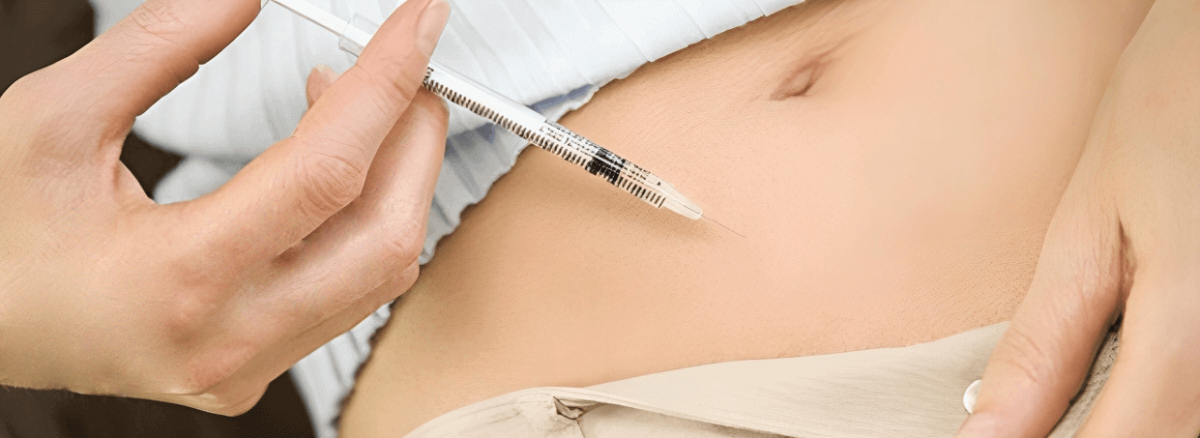- 8 July, 2023
- blog
In vitro fertilization (IVF) treatment can be a challenging journey for couples struggling with infertility, but it also offers the hope of starting a family. The IVF process involves several steps, including ovarian stimulation, egg retrieval, fertilization, embryo selection, and transfer. While IVF success rates vary depending on individual factors, such as age and infertility diagnosis, advancements in technology and medical techniques have made IVF a more viable option for many couples. However, IVF is not without risks, and it can be emotionally and financially demanding. It is important for couples to have a support system and to be well-informed about the process before embarking on IVF treatment. Nonetheless, for many couples, IVF can be the path to achieving their dream of having a child.
IVF Injection
IVF injections are an essential part of the in vitro fertilization process and are typically used to stimulate the ovaries to produce multiple eggs for retrieval. These injections are subcutaneous, meaning that they are given just under the skin using a small, thin needle. The most commonly used type of IVF injection is a gonadotropin-releasing hormone (GnRH) agonist or antagonist, which helps to prevent premature ovulation and ensures that the eggs are retrieved at the right time. Other types of injections may include follicle-stimulating hormone (FSH) and luteinizing hormone (LH), which stimulate the ovaries to produce multiple eggs.
When administering IVF injections, it is important to follow the instructions provided by the healthcare provider carefully. The injections should be given at the same time every day, and the injection site should be rotated to minimize discomfort and the risk of infection. Prior to administering the injection, the skin should be cleaned with alcohol, and the needle should be inserted at a 90-degree angle. Any air bubbles in the syringe should be expelled, and the medication should be injected slowly and steadily.
Ivf-C 5000 IU Injection
IVF-C 5000 IU Injection is a medication used in IVF treatment to stimulate the ovaries to produce multiple eggs for retrieval. It contains chorionic gonadotropin (hCG), which is a hormone that is naturally produced by the female body during pregnancy.
IVF-C 5000 IU Injection is just one of the many tools available to help couples struggling with infertility to conceive a child through IVF treatment. With proper administration and careful monitoring, it can increase the chances of successful conception and a healthy pregnancy.
The medication works by stimulating the production of eggs in the ovaries and helping to prepare the uterus for implantation of a fertilized egg. It is usually given 24 to 48 hours before the eggs are retrieved during an IVF cycle.
As with any medication, there may be side effects associated with IVF-C 5000 IU Injection, including pain or swelling at the injection site, headache, nausea, and abdominal discomfort.

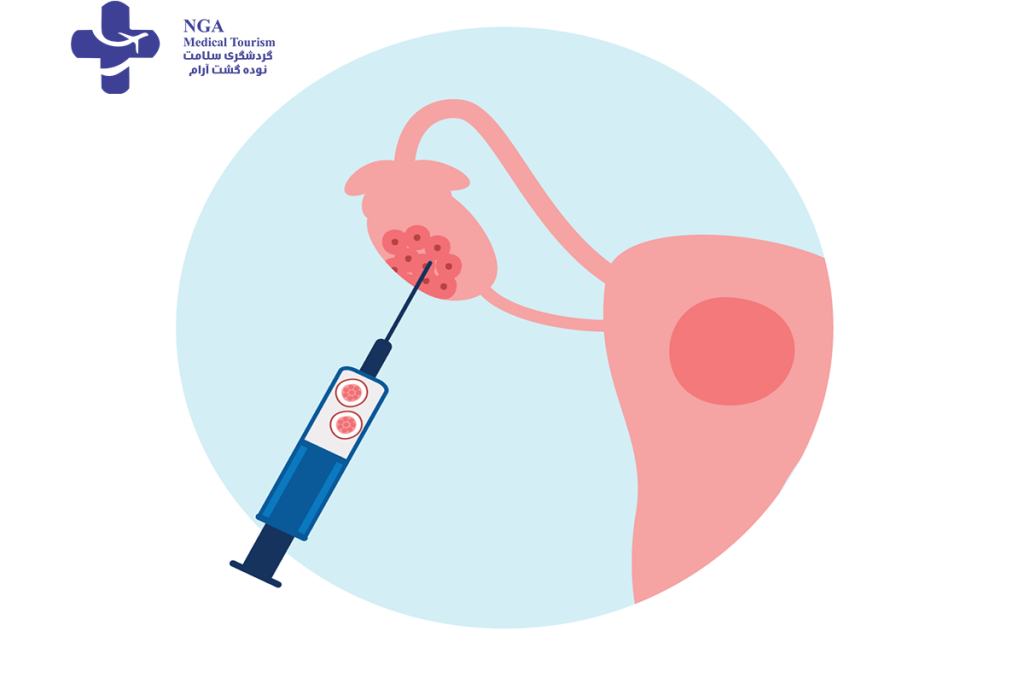
what are the uses of Ivf-C 5000 IU Injection
In addition to IVF treatment, IVF-C 5000 IU Injection may also be used to treat certain medical conditions, such as delayed puberty, cryptorchidism (undescended testes), and hypogonadism (low sex hormone levels).
In delayed puberty, IVF-C 5000 IU Injection can be used to stimulate the production of sex hormones in adolescents who have not yet started puberty. In cryptorchidism, the medication can be used to help the testes descend into the scrotum. In hypogonadism, the medication can be used to stimulate the production of sex hormones in men who have low levels of testosterone.
Why Are Injectable Medicines Used for?
In general, injectable medicines are used when oral medications or other forms of treatment are not effective or are not appropriate for the condition being treated.
While injectable medicines may be intimidating or uncomfortable, they are an important tool in the treatment of many medical conditions and can help patients achieve better health outcomes.
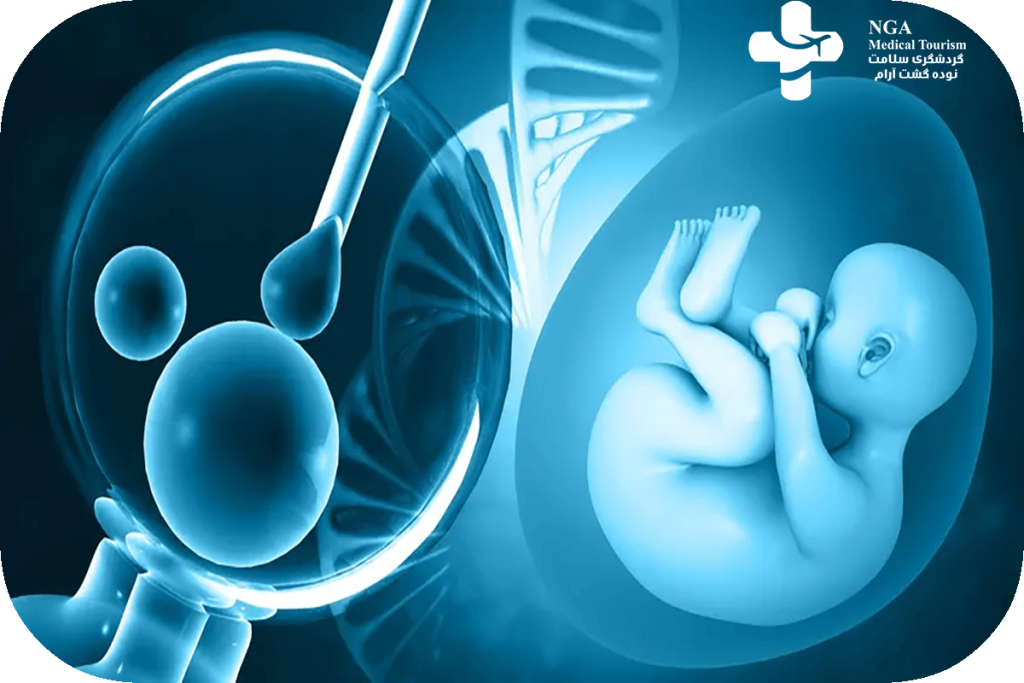

Preparing for Egg Retrieval with IVF Injections
Preparing for egg retrieval with IVF injections involves:
- Follow medication instructions closely.
- Monitor your response through ultrasounds and blood tests.
- Stay hydrated for better egg quality and comfort.
- Rest and manage stress during the process.
- Communicate any concerns with your healthcare provider for guidance and support.
Injection Instructions
The specific instructions for administering IVF injections can vary depending on the medication being used and the individual patient’s treatment plan.
It is important to follow the specific instructions provided by your healthcare provider for administering IVF injections, including the dosage and timing of each injection. Your healthcare provider may also recommend additional steps to ensure that the injections are administered safely and effectively. If you have any questions or concerns about administering your IVF injections, be sure to discuss them with your healthcare provider.
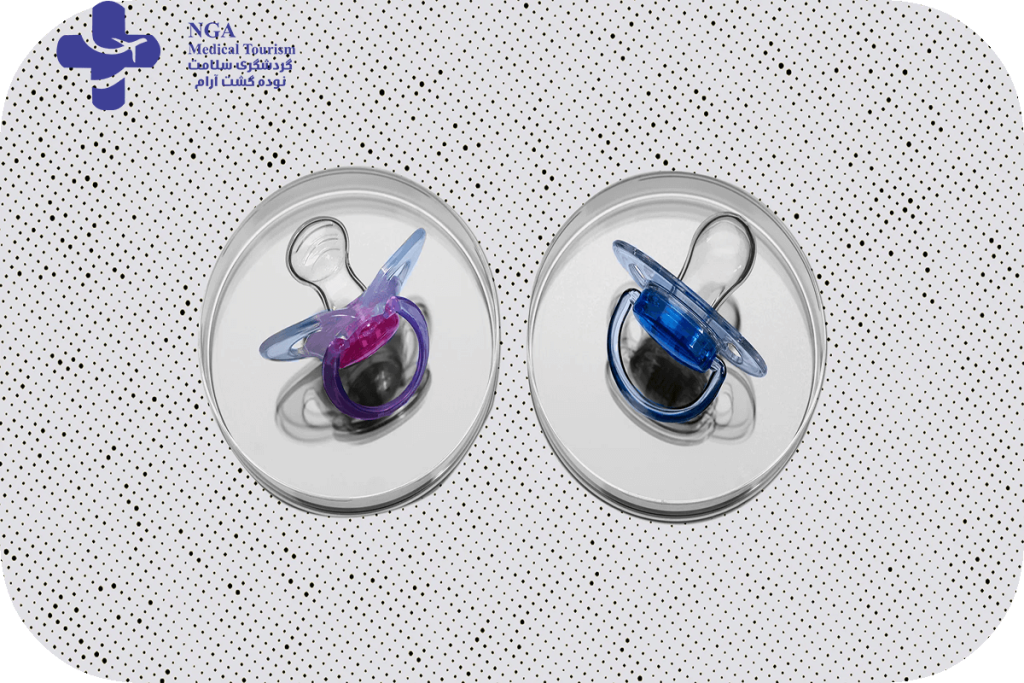
What To Know About Giving IVF Shots at Home
How to give yourself a subcutaneous injection
If you are giving yourself IVF shots at home, there are a few important things to know to ensure that you administer the injections safely and effectively. Here are some tips for giving yourself a subcutaneous injection:
Gather your supplies: Before you begin, make sure you have all the supplies you need, including the medication, syringe, alcohol swabs, and a sharps container for safe disposal of used needles.
Wash your hands: Wash your hands thoroughly with soap and warm water, and dry them with a clean towel.
Choose the injection site: Your healthcare provider will provide instructions on where to inject the medication. Common injection sites include the abdomen, thighs, and upper arms.
Clean the injection site: Clean the injection site with an alcohol swab and allow it to dry.
Prepare the injection: Remove the needle cap from the syringe and check the medication for any particles or discoloration. If you notice anything unusual, do not use the medication and contact your healthcare provider.
Pinch the skin: Pinch the skin at the injection site to create a small fold.
Insert the needle: Insert the needle into the skin at a 90-degree angle, and then slowly push the plunger down to inject the medication.
Remove the needle: Remove the needle from the skin and use an alcohol swab to apply pressure to the injection site for a few seconds.
Dispose of the needle: Dispose of the used needle in a sharps container.
Rotate injection sites: Rotate injection sites to avoid irritation or bruising.
Read More: Lasik eye surgery in Iran Question and Answer
Read More: Eye Surgery cost in Iran (Lasik&Refractive Surgery,Cataract)
Read More: lasik Eye Surgery in Iran
Read More: Glaucoma Treatment In Iran
Read More: Cataract surgery in Iran
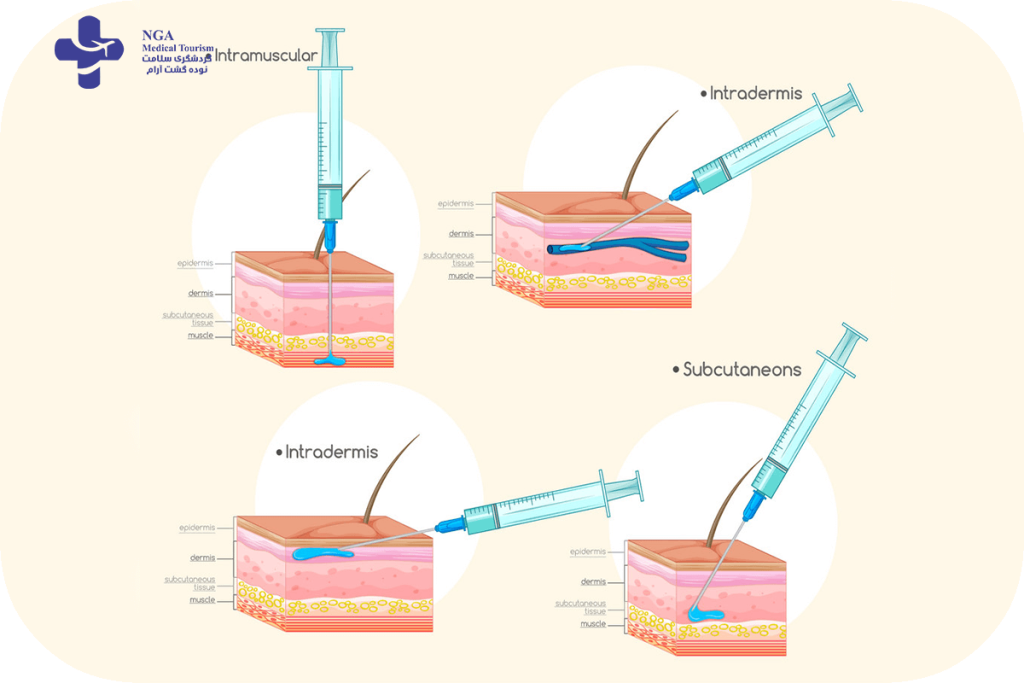
Types of IVF injections
Subcutaneous Injections: Subcutaneous injections are given just under the skin, into the fatty tissue. These injections typically use smaller needles and are generally less painful than intramuscular injections. Some of the medications used in IVF treatment that are given as subcutaneous injections include gonadotropin-releasing hormone (GnRH) agonists or antagonists, follicle-stimulating hormone (FSH), and luteinizing hormone (LH).
Intramuscular Injections: Intramuscular injections are given into the muscle tissue. These injections typically use longer needles and may be more painful than subcutaneous injections. Some of the medications used in IVF treatment that are given as intramuscular injections include human chorionic gonadotropin (hCG) and progesterone.
Tips for Taking IVF Injections at Home
- Practice deep breathing: Taking slow, deep breaths can help to calm your nerves and relax your body. Before giving yourself an injection, take a few deep breaths and focus on your breathing.
- Use relaxation techniques: There are many relaxation techniques you can use to help reduce stress and anxiety during IVF injections.
- Listen to calming music: Listening to calming music can help to distract your mind from the injection process and create a more relaxing environment.
- Use heat or cold therapy: Applying heat or cold therapy to the injection site before or after the injection can help to reduce pain and discomfort.
- Use numbing cream: Your healthcare provider may prescribe a numbing cream that you can apply to the injection site before giving yourself an injection.


How many subcutaneous injections does IVF treatment require?
The number of subcutaneous injections in IVF treatment varies based on the treatment protocol and individual needs. Typically, IVF involves a series of injections over several weeks to stimulate follicle growth. The quantity can range from a few to up to 90 injections per cycle, often administered once or twice daily. Factors like age, ovarian reserve, and medication response influence the injection count. Healthcare providers will provide instructions and adjust the plan as necessary while monitoring your progress.
Which Time is Best for IVF Injections?
The timing of IVF injections can vary depending on the specific treatment protocol and individual patient needs. In general, your healthcare provider will provide specific instructions on when to administer each injection based on your treatment plan.
Some medications used in IVF treatment, such as GnRH agonists or antagonists, are typically administered at a specific time of day to ensure that they are effective. For example, some GnRH agonists are administered in the morning, while others are administered in the evening.
Other medications used in IVF treatment, such as FSH and LH, may be administered at different times of the day depending on the specific treatment protocol and patient needs.

What to Expect from IVF Injections?
Here are some things you can expect from IVF injections:
Multiple injections: IVF treatment typically involves multiple injections administered over a period of several weeks. The exact number of injections and duration of treatment will depend on your specific treatment plan and individual needs.
Regular monitoring: During IVF treatment, your healthcare provider will monitor your progress regularly using blood tests and ultrasounds to check the growth of follicles. This can help to ensure that the medication is effective and that your treatment plan is adjusted as needed.
Possible side effects: IVF injections can cause side effects such as bloating, mood swings, and discomfort at the injection site. However, these side effects are typically temporary and can be managed with medication or other strategies.
Emotional stress: IVF injections and the overall IVF treatment process can be emotionally stressful. It’s important to have a support system in place and to communicate openly with your healthcare provider about any concerns or issues.
Increased chance of pregnancy: IVF injections can help to increase your chances of becoming pregnant, especially if you have infertility related to ovulation or other hormonal issues.
Common side effects of subcutaneous fertility shots
Subcutaneous fertility shots are commonly used in IVF treatment to stimulate the ovaries and promote the growth of follicles. While these injections can be effective in helping to increase the chances of pregnancy, they can also cause some side effects. Some common side effects of subcutaneous fertility shots may include:
- Injection site reactions: These can include redness, swelling, and bruising at the injection site.
- Bloating: Fertility shots can cause bloating due to the increased size of the ovaries.
- Headaches: Some patients may experience headaches as a side effect of fertility shots.
- Mood swings: The hormonal changes caused by fertility shots can lead to mood swings, including increased anxiety, irritability, and depression.
- Nausea: Some patients may experience nausea as a side effect of fertility shots.
- Ovarian hyperstimulation syndrome (OHSS): In rare cases, fertility shots can cause OHSS, a condition in which the ovaries become swollen and painful. Symptoms of OHSS can include abdominal pain, bloating, nausea, and vomiting.
It’s important to discuss any potential side effects of fertility shots with your healthcare provider before beginning treatment. They can provide guidance and support to help you manage any side effects that may occur and ensure that the treatment is as safe and effective as possible.
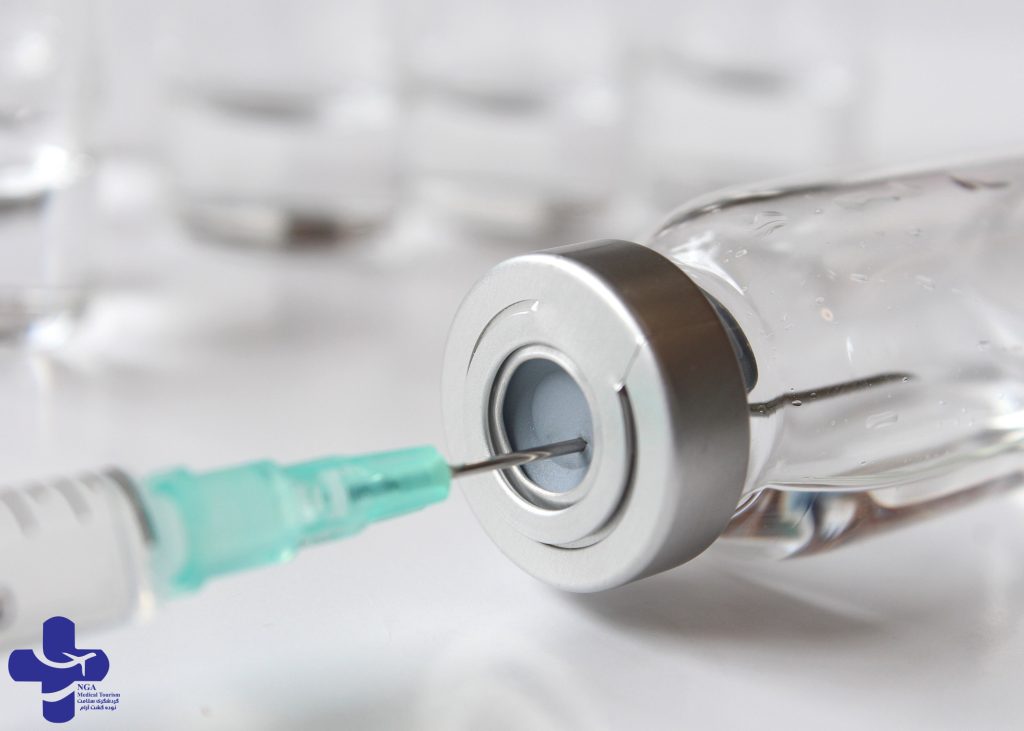
What Can You Do to Make Your Egg Quality Better?
There are several things that can be done to help improve egg quality, which can increase the chances of a successful pregnancy. Here are some tips:
- Maintain a healthy lifestyle: Eating a healthy diet, exercising regularly, and getting enough rest can help to improve overall health and wellness, which can have a positive impact on egg quality.
- Avoid smoking and excessive alcohol consumption: Smoking and excessive alcohol consumption can have a negative impact on fertility and egg quality.
- Manage stress: High levels of stress can have a negative impact on fertility and egg quality. Finding ways to manage stress, such as through exercise, meditation, or counseling, can help to improve overall health and wellness.
- Consider supplements: Some supplements, such as CoQ10, DHEA, and omega-3 fatty acids, have been shown to have a positive impact on egg quality.
- Consider acupuncture: Acupuncture has been shown to help improve blood flow to the ovaries and improve egg quality.
- Consider IVF treatment: In some cases, IVF treatment can help to improve egg quality by stimulating the ovaries and promoting the growth of multiple follicles.
It’s important to discuss any concerns about egg quality with your healthcare provider. They can provide guidance and support to help you make decisions about your fertility treatment and increase your chances of a successful pregnancy.
IVF Egg Retrieval Process
The IVF egg retrieval process is a critical step in the in vitro fertilization (IVF) treatment process. It is typically performed under sedation or anesthesia, and involves the following steps:
Ovarian stimulation: Prior to egg retrieval, the patient is typically given medications to stimulate the ovaries and promote the growth of multiple follicles, which contain the eggs.
Monitoring: Throughout the ovarian stimulation process, the patient is monitored closely to track the growth of follicles and check hormone levels.
Trigger shot: Once the follicles have reached the appropriate size, the patient is given a trigger shot to prepare the follicles for egg retrieval.
Egg retrieval: The egg retrieval procedure is typically performed 34-36 hours after the trigger shot. The procedure takes about 20-30 minutes and is performed under sedation or anesthesia. The physician uses a specialized ultrasound-guided needle to retrieve the eggs from the follicles.
Post-retrieval care: After the egg retrieval procedure, the patient is typically monitored for a short period of time before being discharged. Some patients may experience mild cramping or bloating after the procedure, but these side effects typically resolve within a few days.
Fertilization: Once the eggs have been retrieved, they are fertilized with sperm in a laboratory. The resulting embryos are then monitored and graded for quality before being transferred to the uterus for implantation.

Is IVF Egg Retrieval Painful?
The IVF egg retrieval procedure is typically performed under sedation or anesthesia, so patients should not feel any pain during the procedure itself. However, it is not uncommon for patients to experience some discomfort or mild cramping after the procedure.
During the procedure, the physician uses a specialized ultrasound-guided needle to retrieve the eggs from the follicles. The patient is typically given sedation or anesthesia to help manage any discomfort or pain during the procedure.
After the procedure, it is not uncommon for patients to experience some discomfort or mild cramping in the pelvic region. Some patients may also experience bloating or abdominal discomfort for a few days after the procedure.
However, it’s important to note that the level of discomfort or pain experienced after the egg retrieval procedure can vary from patient to patient. Some patients may experience minimal discomfort, while others may experience more significant discomfort.
After Your Egg Retrieval
Following the egg retrieval procedure in IVF, post-retrieval care is essential. This phase involves resting to recover from any mild cramping or bloating, with potential prescription of pain relievers or antibiotics. Scheduled follow-up appointments with your healthcare provider help monitor progress and discuss the next steps, including embryo transfer. The embryos, if successfully fertilized, undergo assessment for quality before being transferred into the uterus for potential implantation, typically a few days post-retrieval. The final stage involves a pregnancy test about two weeks after the embryo transfer, determining the success of the procedure in achieving pregnancy, marking a pivotal moment in the IVF process.


IVF Success Rates
IVF success rates vary depending on factors like age, infertility causes, and treatment protocols. Generally, younger women with fewer fertility issues have higher success rates, with about 25% per cycle for those under 35. Success rates decrease with age, dropping to around 15% for women aged 35-37 and 7% for those aged 41-42. To enhance IVF success, maintaining a healthy lifestyle, avoiding smoking and excessive alcohol, managing stress, adhering to treatment plans, considering preimplantation genetic testing (PGT), and potentially using donor eggs or sperm can be beneficial. Choosing a reputable clinic with experienced specialists is also crucial for achieving better outcomes.
Can you select the sex of the embryo in the IVF process?
Preimplantation Genetic Testing for Sex Selection (PGT-S) is a technique used in IVF to determine the sex of embryos before implantation by analyzing a few embryo cells for male or female chromosomes. PGT-S is primarily employed in cases involving the risk of passing on sex-linked genetic disorders or when couples have a preference for a specific gender. However, it’s not always 100% accurate, and some countries have restrictions on its non-medical use, such as for family balancing. Prior to considering PGT-S, it’s essential to consult with your healthcare provider to understand the associated risks and benefits and make informed decisions regarding your fertility treatment.
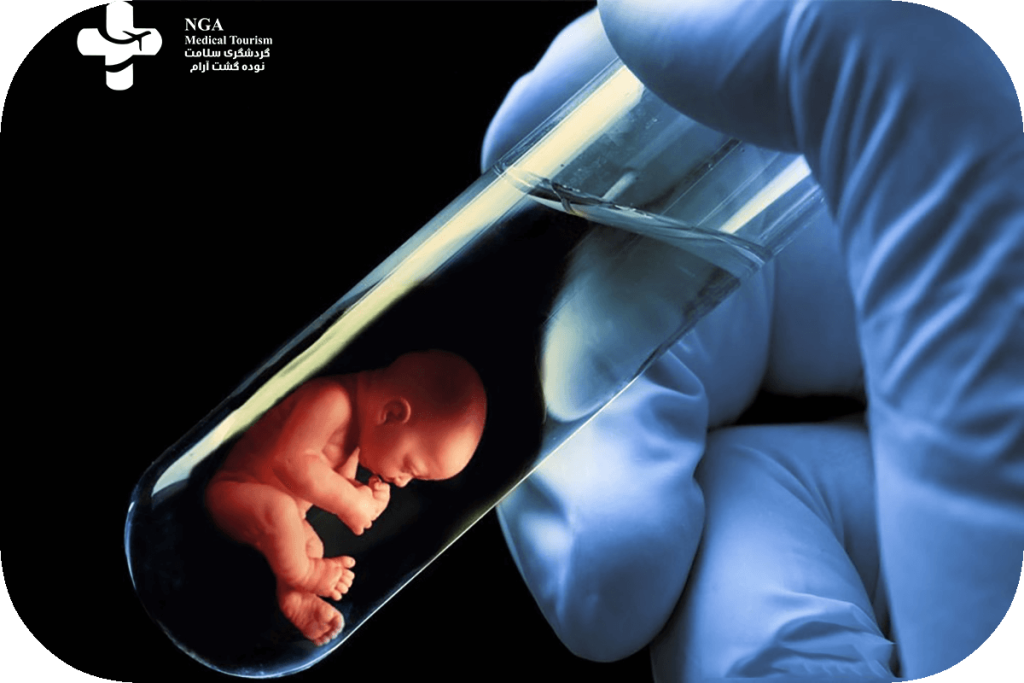
IVF in Iran
Why Is Iran the Best Place for Doing IVF?
There are several reasons why Iran has become a popular destination for IVF treatment:
High-quality care: Iran has a well-developed healthcare system with many experienced and highly trained fertility specialists. Many fertility clinics in Iran use the latest technologies and techniques to provide high-quality care to patients.
Affordability: IVF treatment in Iran is typically less expensive than in many other countries, making it a more accessible option for many people.
Legal and religious support: IVF treatment is legal in Iran and is supported by the government and religious authorities. This means that there is a strong infrastructure and support system in place for IVF patients.
High success rates: Many fertility clinics in Iran report high success rates for IVF treatment, particularly for young and healthy patients. This can be attributed to the high level of expertise and experience of fertility specialists in Iran, as well as the use of advanced technologies and techniques.
Cultural considerations: Iran is a country with strong family values and a culture that places a high importance on having children. This can make it a more supportive environment for individuals and couples undergoing IVF treatment.
How much does IVF cost?
Cost of IVF in Iran
The cost of IVF (in vitro fertilization) can vary widely depending on a number of factors, including the location, clinic, and individual patient needs. In Iran, the cost of IVF can also vary depending on the clinic and the specific treatment protocol used.
Generally speaking, the cost of IVF in Iran is lower than in many other countries, making it a more affordable option for many patients. On average, the cost of a single cycle of IVF in Iran can range from $2,500 to $4,500 USD. This cost typically includes the cost of medications, ultrasounds, monitoring, and the procedure itself.
It’s important to note that the cost of IVF can vary depending on individual patient needs and circumstances. For example, patients who require additional treatments or procedures may incur additional costs.
Read More: Arteriovenous Malformations
Read More: Aortic Valve Stenosis (Aortic Stenosis)
Read More: Heart Valve Surgery
Read More: Cardiology in Iran
Read More: General Heart Surgery
Common side effects of IVF include bloating, cramping, breast tenderness, mood swings, headaches, and fatigue. More serious complications such as ovarian hyperstimulation syndrome (OHSS), ectopic pregnancy, or miscarriage are rare but possible.
The length of time it takes to complete a full cycle of IVF varies depending on the individual’s specific treatment plan, but typically takes between 4-6 weeks from the start of ovarian stimulation until the embryo transfer. However, additional cycles may be necessary to achieve a successful pregnancy.
Emotional support for individuals undergoing IVF is available through a variety of sources, including therapists, support groups, online forums, and fertility clinics themselves. Many clinics have specialized programs and resources in place to provide emotional support to patients throughout the IVF process.
Yes, there are alternative fertility treatments to IVF (in vitro fertilization), including intrauterine insemination (IUI), ovulation induction, and the use of donor eggs or sperm. Adoption and surrogacy are also options for building a family. The best course of treatment will depend on the individual’s specific fertility diagnosis and circumstances.
IVF (in vitro fertilization) is not considered elective surgery, as it is a medical treatment for infertility that is intended to help individuals or couples conceive a child. While it is not always covered by insurance, it is a recognized and accepted medical procedure.
Yes, gender selection is possible through IVF (in vitro fertilization) using a technique called preimplantation genetic testing (PGT). This involves testing the embryos for genetic abnormalities and selecting those with the desired gender before transferring them into the uterus. However, gender selection is often not permitted for non-medical reasons in many countries.
While it is possible to transfer multiple embryos during an IVF cycle to increase the chances of a successful pregnancy, intentionally seeking twins is generally not recommended due to the increased health risks associated with multiple pregnancies. Most fertility clinics follow guidelines that limit the number of embryos transferred, taking into account the individual’s age and overall health.
The calculation of pregnancy weeks after IVF is similar to that of a natural pregnancy, with the first day of the last menstrual period considered as week one. However, since the exact date of conception is known in IVF, the due date is typically calculated based on the date of embryo transfer, with pregnancy weeks counted from that date.
The timing of a pregnancy test after IVF (in vitro fertilization) will depend on the individual’s treatment protocol, but it is typically recommended to wait at least 10-14 days after the embryo transfer before testing. This allows enough time for the hormone hCG (human chorionic gonadotropin) to build up in the body if pregnancy has occurred.
The timing of IVF (in vitro fertilization) injections will depend on the individual’s specific treatment protocol, but they are usually started during the early stages of the menstrual cycle, around day 2 or 3. The exact timing and dosage of the injections will be carefully monitored and adjusted as needed by the fertility team.
Injections are given during IVF (in vitro fertilization) to stimulate the ovaries to produce multiple mature eggs that can be retrieved and fertilized in the laboratory. The injections typically contain hormones such as follicle-stimulating hormone (FSH) and luteinizing hormone (LH) that help regulate the menstrual cycle and promote the development of ovarian follicles.
The injections given during IVF (in vitro fertilization) typically include gonadotropins such as follicle-stimulating hormone (FSH) and luteinizing hormone (LH) to stimulate the ovaries to produce multiple follicles. Other medications such as human chorionic gonadotropin (hCG) may also be given to trigger ovulation and prepare for embryo transfer. The dosage and timing of these injections are carefully monitored and adjusted by the fertility team.
The pain experienced during IVF (in vitro fertilization) injections can vary from person to person and depend on the specific injection site. While some injections may cause mild discomfort, others may be more painful. However, most patients find the pain to be manageable, and there are techniques available to help reduce discomfort, such as numbing creams or local anesthesia.
The number of injections required for IVF (in vitro fertilization) will depend on the individual’s specific treatment protocol, but patients may receive up to 90 injections per cycle, with a frequency of 1-2 injections per day. The exact number and timing of injections will be carefully monitored and adjusted as needed by the fertility team.
Islamic views on IVF (in vitro fertilization) vary among different scholars and schools of thought, with some accepting it as a permissible form of medical treatment for infertility and others raising concerns about the use of third-party gametes, surrogacy, and the destruction of unused embryos. Many Islamic authorities have issued guidelines to help Muslims navigate the ethical and religious implications of IVF and related fertility treatments, and it is ultimately up to individuals and couples to make their own informed decisions based on their own religious beliefs and values.


